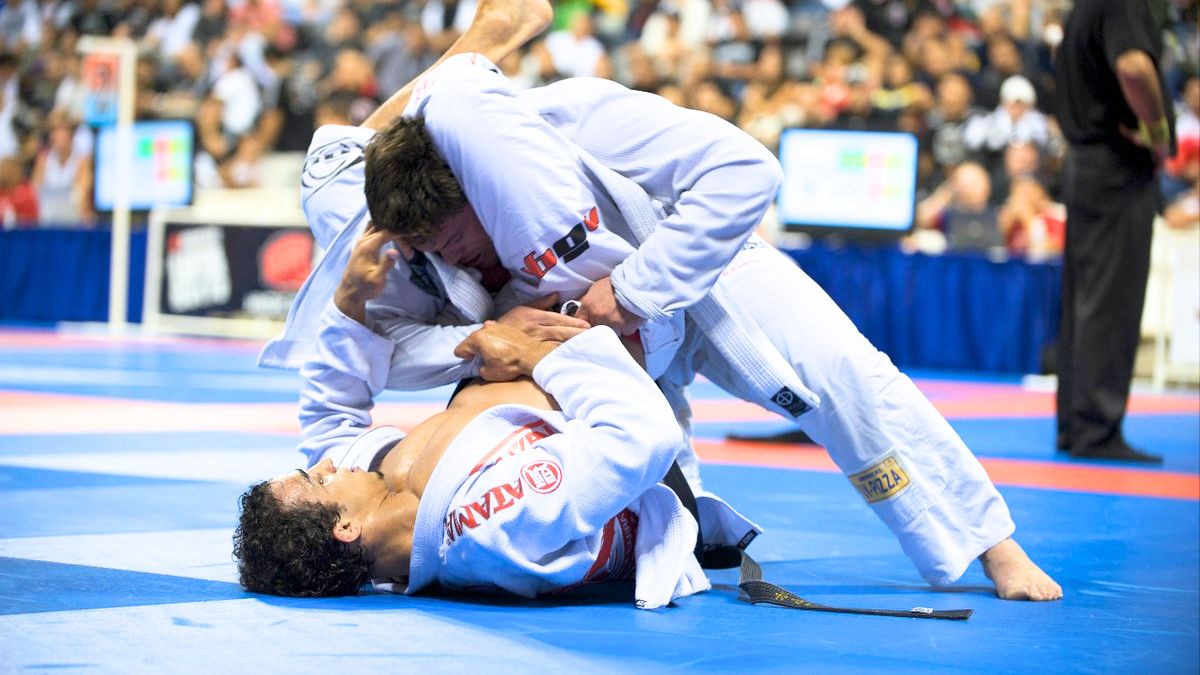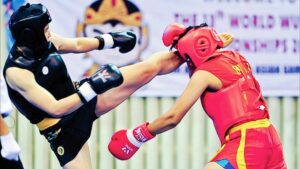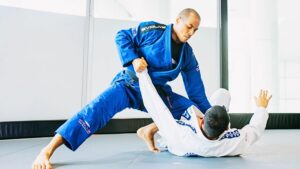Ju-jitsu, also spelt Ju-jitsu or Jiu-Jitsu, comes from the family of Japanese martial arts. Traditional Japanese martial art uses leverage, joint locks, and various grappling techniques to control or defeat an opponent.
Also Read: Asian Games 2023: India’s Squad of Ju-jitsu
It is not played as a sport typically. Instead, it is practised as a martial art for self-defence and combat situations. This martial art doesn’t rely on weapons and mainly involves strikes, throws, holds, and immobilizing moves against opponents. Jujutsu originated in Japan around the 17th century, primarily among warriors.
Its purpose was to complement a warrior’s sword skills in battle. Some techniques from specific jujutsu styles were later adapted to create modern martial arts and combat sports like Judo, aikido, sambo, ARB, Brazilian ji-jitsu, and mixed martial arts.
However, in modern times, various forms of Ju-Jitsu have been adapted into sports like Brazilian Ji-Jitsu (BJJ) and Judo, which have competitive rules and tournaments.
Know All Rules and Regulations
In adherence to the rules of this martial art or combat sport, several actions are strictly prohibited. These include any attempts at heel hooks, twisting knee locks, and any form of striking, such as punches or kicks. Unsporting tactics such as biting, hair-pulling, or eye-gauging are strictly forbidden.
Additionally, competitors are not allowed to slam their opponents forcefully, and cervical neck cranks are prohibited. These rules are put in place to prioritize the safety and sportsmanship of participants while maintaining the integrity of the competition. Here are the rules and regulations of Ju-Jitsu
Uniform
Competitors must wear a clean, well-fitted (a traditional uniform) during competitions.
Weight Classes
Competitors are usually divided into weight classes to ensure fairness in competition. Standard weight classes include lightweight, middleweight, and heavyweight.
Belt Levels
Competitors are matched with opponents of similar belt levels to maintain competitive balance. For example, white belts compete against white belts, and so on.
Scoring
Points are awarded for achieving dominant positions and successful techniques during a match. Common scoring positions include passing the guard, taking the opponent’s back, and achieving mount or side control.
Time Limits
Matches are typically timed, with different time limits for belt levels and age groups. Typical match lengths range from 5 to 10 minutes for adults.
Tap Out
The primary way to win a match is by forcing the opponent to tap out (submit) due to a joint lock or a chokehold. The tap-out is a signal of surrender and signifies the end of the match.
Penalties
Penalties for actions such as stalling, illegal techniques, or unsportsmanlike behaviour may be assessed. More number of penalties can result in disqualification.
Safety Measures
Competitors are expected to train and compete with safety in mind. Intentional and reckless actions that may cause injury are strictly discouraged.
No Strikes
Unlike some other martial arts, Ju-Jitsu prohibits striking techniques. Strikes, punches, and kicks are not allowed in Ju-Jitsu competitions.
Reaping and Heel Hooks
Some tournaments have specific rules regarding leg locks, particularly heel hooks and knee reaping, which can be dangerous if misapplied. These techniques may be restricted or allowed based on tournament rules.
Mat Area
Matches occur within a designated mat area, and competitors must stay there during the match.
Referee Decisions
The referee’s decisions during a match are final. Competitors and coaches should respect the referee’s authority and decisions.
Sportsmanship
Good sportsmanship is highly valued in Ju-Jitsu. Competitors are expected to respect their opponents, coaches, and referees.
Scoring System
In this scoring system, various actions in Ju-Jitsu are assigned point values to determine a competitor’s performance in a match. A successful throw or takedown earns 2 points, as does establishing the knee-on-stomach position or transitioning from the guard or half-guard to a top position. Passing the opponent’s guard is rewarded with 3 points while achieving the top mount position, a dominant ground control, earns 4 points.
Controlling the opponent’s back, either from a back mount or securing a back grab, also garners 4 points. These point allocations help judges and referees assess the effectiveness of a competitor’s techniques and positioning during a BJJ match.





